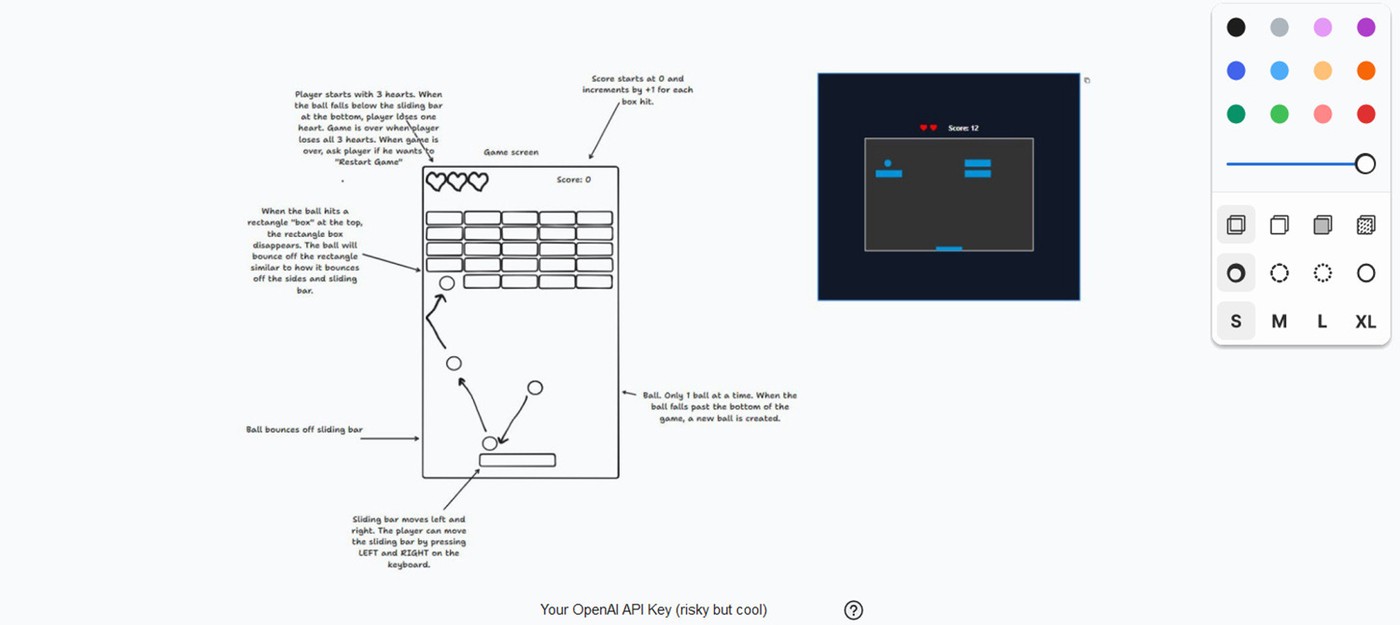tldraw Introduces Make It Real to transform sketches into web applications

This week marked a significant milestone in the tech community with the unveiling of "Make It Real," an AI prototype tool implemented in the collaborative whiteboard app tldraw. This feature, leveraging OpenAI's GPT-4V API, transforms user-generated vector drawings into functional web applications. By converting sketches into operational Tailwind CSS and JavaScript code, "Make It Real" offers a new method for creating user interfaces and simple games, such as Breakout, into tangible, working software.
The capabilities of this tool were demonstrated by designer Kevin Cannon in a detailed social media thread. He showcased the prototype's proficiency in generating functional sliders, color-changing interfaces, and a fully operational tic-tac-toe game. The versatility of "Make It Real" extends beyond these examples, with further demonstrations including a clone of Breakout, an operational clock, and a Snake game.
Access to "Make It Real" via an online demo requires an OpenAI API key, which introduces potential security risks. The unauthorized use of such keys could incur significant financial liabilities due to OpenAI's data usage-based billing. For individuals with technical expertise, local code execution is a viable alternative, albeit still dependent on OpenAI API access.
Tldraw integrates the GPT-4V API's ability to process visual inputs. As AI expert Simon Willison outlines, "Make It Real" operates by generating a base64 encoded PNG of the drawing, which is then processed by GPT-4 Vision to produce the corresponding web code.
"Make It Real" represents more than a technological achievement — it signifies a shift in software development and interface design. It envisions a future where developing functional prototypes is as straightforward as creating a visual draft, with AI handling the coding process. This shift has the potential to democratize software development, enhancing accessibility and efficiency for developers and designers, and could lead to a redefinition of industry standards and new avenues in technological innovation.
- New Claude Learning mode will encourage students to answer questions independently
- Bill Gates predicts AI will replace doctors and teachers within the next decade